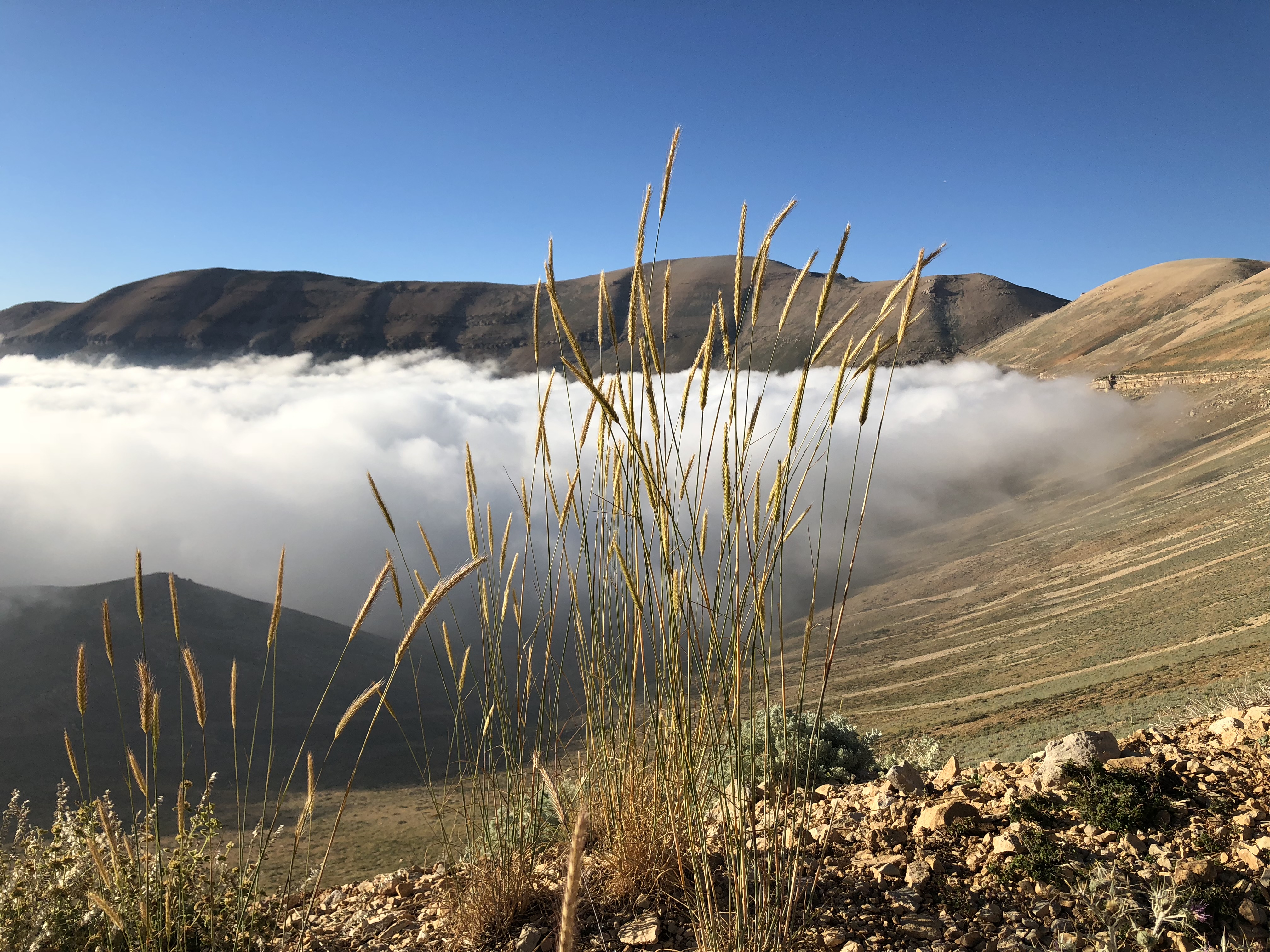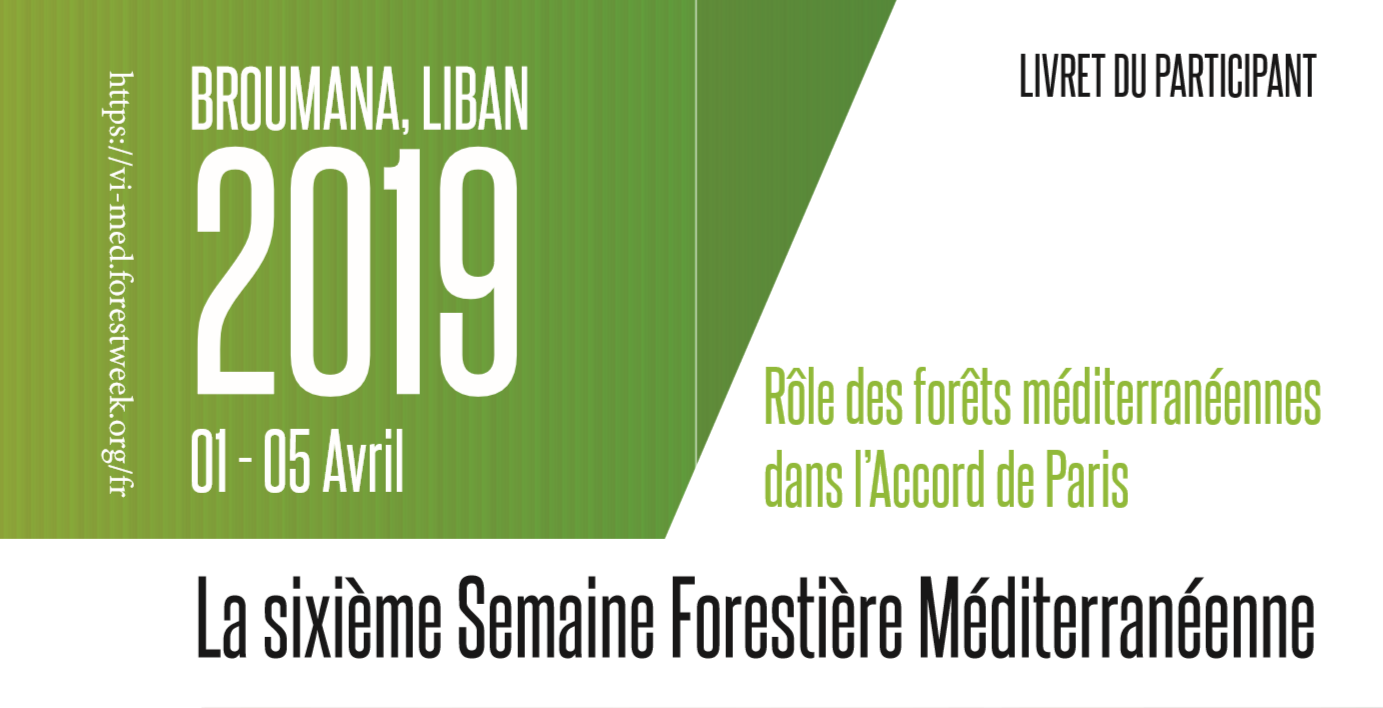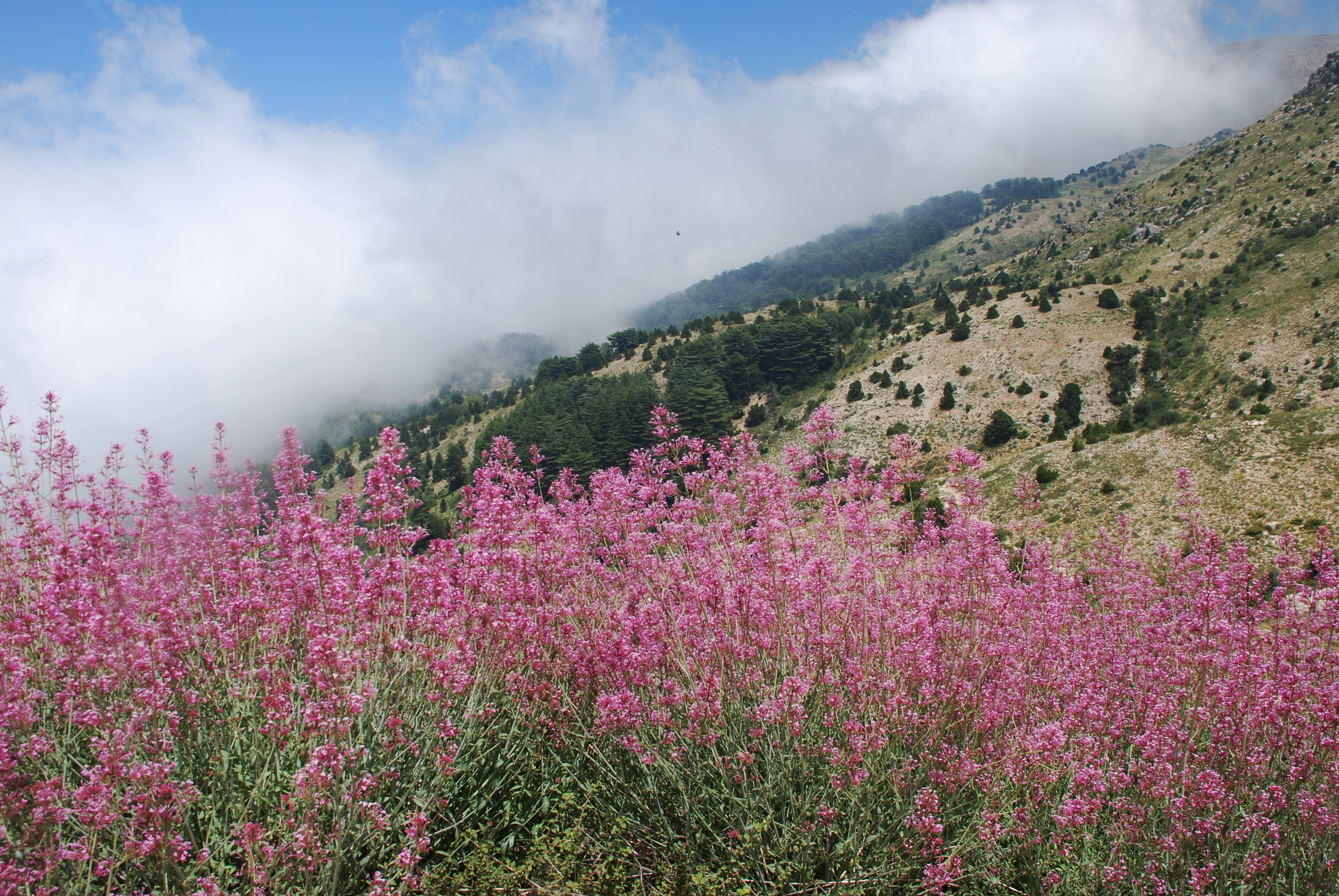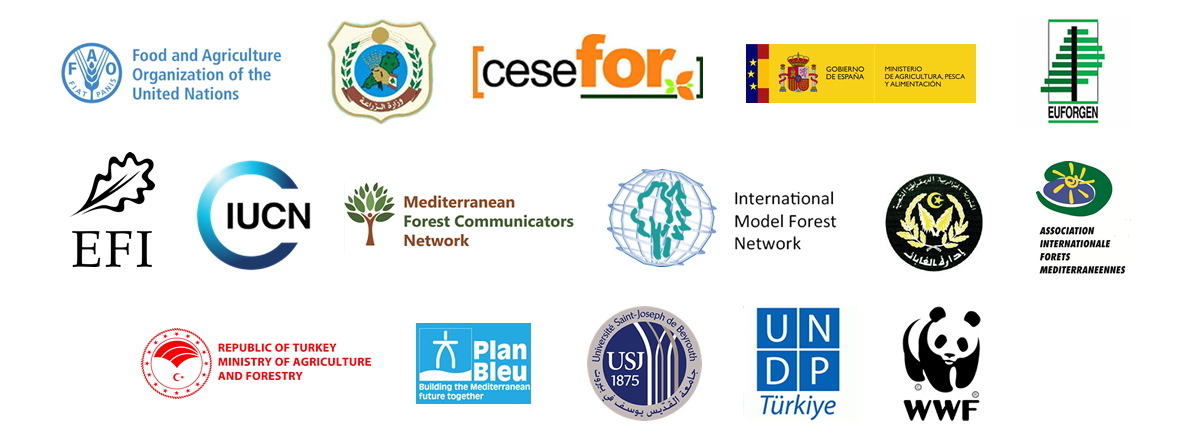Session posters
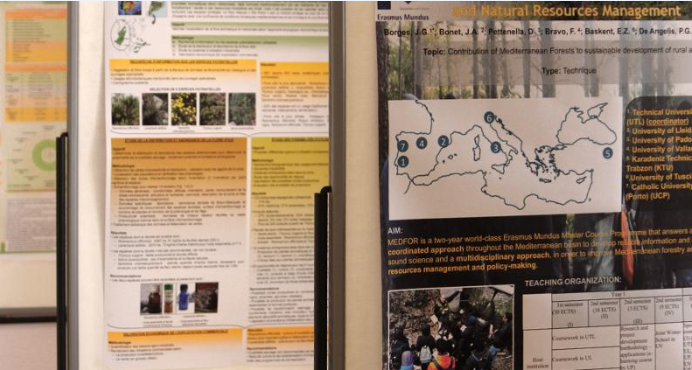
Concours de posters
Les participants à la sixième SFM ont voté en faveur de la sélection du poster gagnant appartenant à Rana El Zein. Son affiche s'intitule "Le changement climatique est-il un risque émergent pour Cedrus libani? Une étude dendroécologique pour évaluer la vigeur des forêts de cèdres au Liban".
Contexte
La Semaine forestière méditerranéenne (SFM) rassemble une grande diversité d’acteurs qui prennent part à l’un des plus importants forums sur les forêts méditerranéennes d’aujourd’hui. Cet évènement bisannuel facilite la coopération entre les gestionnaires forestiers, la communauté scientifique et universitaire, le secteur privé, les bailleurs de fonds, la société civile, les agences environnementales et les ONGs en proposant une plateforme de dialogue régional commune. Cet évènement souligne également l’importance des forêts méditerranéenne au niveau global et met l’accent sur les défis auxquels ces forêts font face. En 2019, le Liban accueillera la sixième SFM qui se focalisera sur le rôle des forêts méditerranéennes dans l’Accord de Paris. La sixième SFM encouragera l'utilisation de solutions basées sur les forêts pour aider les pays Méditerranéens à mettre en œuvre leurs contributions déterminées au niveau national (CDN) au titre de l'Accord de Paris. Incarnant les efforts des pays pour réduire leurs émissions nationales, les CDN sont essentielles à la fois pour le succès de l’Accord et pour les efforts à l’échelle mondiale pour lutter contre le changement climatique. En collaborant avec les autres secteurs liés à l’utilisation des terres concernés à l’échelle du paysage, le secteur forestier méditerranéen peut jouer un rôle important pour aider les pays de la région à atteindre leurs objectifs CDN. La sixième SFM présentera également l'utilisation de solutions basées sur la forêt pour faire face à des défis régionaux plus larges tels que le développement durable, la transition énergétique, les changements démographiques et les migrations. Il examinera comment créer un environnement propice à l'élargissement de l'utilisation de ces solutions, tout en soulignant l'importance de reconnaître et de protéger la valeur sociale, environnementale, économique et culturelle des biens et services déjà fournis par les forêts Méditerranéennes.
Socio-Economic Assessment of Old Reforested Sites in Lebanon
Juliette Amidi - Association for Forests, Development and Conservation (AFDC) ► Display
Economic valuation of ecosystems is the study of goods and services provided by these ecosystems to society. Since the 1960s, Lebanon has been subject to important reforestation activities which resulted in the establishment of several cedar, pine and other mixed forest stands. To assess the goods and services provided by these forest ecosystems, thirteen reforested sites located in different regions in Lebanon were selected. The socio-economic assessment was done using questionnaires distributed to locals that have close interactions with the neighboring forests; it included among other questions, a double bonded dichotomous contingent valuation question related to their willingness to pay for reforestation and forest management activities. Results of the goods and services assessment revealed that pine forests present more direct goods and services while cedar forests present more cultural and regulation services. The Contingent Valuation (CV) showed that 74% of respondents did express a willingness to pay (WTP). Most of the respondents that expressed a WTP gave a great importance to intrinsic values of the forests for which 74% selected “right of forests to exist”. WTP was mostly affected by the respondents’ income; respondents having lower incomes and found near mixed forests were more WTP for the proposed project while respondents having higher incomes and found near pine and cedar forest did not express a WTP. This gave an important indication on the level of concern that the people express towards the forests regardless of their use. The total economic value of these reforested sites was estimated between 1,145 and 8,075 USD/ha in terms of return from goods and services. Considering these numbers, involving the locals in further reforestation activities would help insure the sustainable conservation of these sites.
Key Words: Reforestation, Socio-economic Assessment, Contingent Valuation, Willingness to Pay.
FRESh LIFE Project: Demonstrating Remote Sensing Integration in Sustainable Forest Management
Andrea Barzagli - University of Florence ► Display
Climate change is an unprecedented issue in modern times, with significant implications for forested ecosystems, the economic benefits they provide, and the livelihoods of those who depend on them. Climate change is also a dynamic and complex issue that increases uncertainty about what future forests will look like. In this scenario, tools that allow forest managers to take forward-looking decisions are useful in order to preserve the goods and services provided by the forests. Sustainable Forest Management is based on the principle of maintaining and enhancing the long-term health of forest ecosystems while providing environmental, economic, social, and cultural opportunities for current and future generations. The objective of the FRESh LIFE project is to demonstrate the possible integration of remote sensing technologies in Sustainable Forest Management in order to provide advanced spatial information that decision makers and forest managers can use to explore potential changes in future climate and their anticipated impacts on forests and forestry. In this study we present the activities of the FRESh LIFE project carried out in a Mediterranean study area (Central Italy) to create a Forest Information System (DSS). Forest inventory data and high resolution remote sensing data acquired by drones (UAV) were used to produced maps of Sustainable Forest Management Indicators. These maps were implemented in the Forest Information System to support forest manager in the decision making process.
Keywords: Forest, UAV, Remote Sensing, Sustainable Forest Management
Comparison and modeling of water status of three provenances in North East Tunisia of "Pinus Halepensis Mill" forest.
Mokhtar Baraket - National research Institute of rural engineering, Water and Forests (INRGREF). ► Display
The forests that are now regenerating will have to adapt with the climatic conditions that will prevail for several decades, even more than a century. These terrestrial ecosystems play an important role against the increase of GES in the atmosphere and therefore in the prevention of climate change that significantly modifies the ecophysiological response of trees and profoundly affects ecosystems. The objective of this work is to compare the water status of three Aleppo pine sites from different bioclimatic stages, Djebel Zaghouan, Djebel Mansour and Djebel Sarj, based on soil-plant-atmosphere continuity. The experimental approach is based on monitoring soil water behavior, gas exchange and hydraulic conductivity with climatic variability.
First results showed that DZ is both tolerable water status and physiology compared to the others sources DM and DS, it was ranked the best performing in terms of adaptation with a low average of ET0 (3.2 mm / d) while DM and DS recorded 5.3 and 5.5 mm / d respectively. In addition, DZ showed a significant relative humidity in the soil with 26% and a xylemic conductivity with 16.3% of embolism compared to DM and DS which have the highest percentages related to the increase in drying up.
Keywords: Aleppo pine, climate change, gas exchange, conductivity, water status, Tolerable.
The LIFE FOREST CO2 Project, the silviculture as a mitigating element of climate change
Guillermo Palacios-Rodríguez - University of Córdoba ► Display
The LIFE FOREST CO2 project aims to promote sustainable forest management as a tool for mitigating climate change, through the application of European regulations concerning the accounting of emissions and removals in the LULUCF sector.
As a result of the project, models have been developed to quantify the carbon fixation capacity in the biomass and soil fractions of Pinus pinaster and P. halepensis forest stands depending on the forestry applied. The participation of institutions involved in the compensation and mitigation processes has been a priority for the project, having developed technical guides to support the processes of calculation, reduction and mitigation, with an involvement so far of more than 200 managers, owners, companies and public institutions in the project in Spain and France.
Keywords: Adaptative Silviculture, CO2 fixation models
Les attaques parasitaires (gui nain) de certains peuplements auront-elles un impact sur la résistance des forêts sèches dans un contexte de réchauffement climatique?
Alain Fridlender - Faculté des Sciences ► Display
Des alertes émanant de forestiers, ONG et plus rarement de scientifiques pointent une mortalité croissante des genévriers suite aux attaques par le gui du genévrier (Arceuthobium sp.). En Méditerranée occidentale, les genévriers atteints (principalement J. communis, J. oxycedrus et J. phoenicea) sont généralement des arbustes qui n’attirent guère l’attention des forestiers. En revanche, au Liban, en Turquie ou en Iran le gui peut entrainer la mort des Juniperus drupaceae et J. excelsa s.l. qui sont des arbres forestiers qui plus est protégés (coupes et destruction interdites).
Depuis une quinzaines d’année en Iran et plus récemment au Liban, on observe une lutte peu organisée et souvent assez informelle en réaction à des mortalités locales de grands sujets. Celle-ci consiste le plus souvent à couper les arbres ou les grosses branches atteintes. Lorsque ces coupes concernent des genévriers mâtures, les arbres finissent par mourir non pas des suites de l’attaque par les guis mais par ces tailles violentes effectuées par les forestiers. Depuis des siècles, on sait pourtant bien qu’il ne faut pas tailler des conifères âgés, sous peine de les faire dépérir.
De telles pratiques sont alors décriées par les villageois qui voient mourir les arbres ainsi mutilés (alors qu’eux n’ont pas le droit de les couper ni les exploiter). Dans le nord de l’Iran, de tels boisements clairs de grands genévriers demeurent rares et ne subsistent que dans certains secteurs, où précisément les villageois les avaient protégées pour des raisons variées (abris pour le troupeau, maintien des sols de pentes, bois sacrés…).
A une autre échelle, on peut s’interroger sur l’impact des guis qui, en affaiblissant les arbres pourraient rendre les peuplements plus fragiles face aux changements globaux (changements climatiques).
Or, il s’avère que la biologie, l’écologie et même la distribution précise du gui nain sont à peu près inconnus dans le bassin méditerranéen. Les seules données disponibles sur ces parasites concernent les espèces nord-américaines qui ne parasitent pas les genévriers mais d’autres conifères arborescents comme les pins.
L’étude des peuplements de genévriers parasités en Méditerranée occidentale nous a montré que le gui est un acteur important de la dynamique forestière. Nos premières observations concernant les peuplements libanais et iraniens, soulignent qu’en Méditerranée orientale, les Arceuthobium sont également de bons indicateurs d’un écosystème équilibré et participent ainsi à la dynamique forestière, notamment en facilitant les successions d’espèces, ce qui ne pourrait que contribuer à la résilience des forêts sèches face aux changements climatiques.
Key words: forêts seches, dynamique, parasite
à propos de la sixième SMF
Silva Mediterranea
Forestry Policy and Resources Division (FOA)
Food and Agriculture Organization of the United Nations

